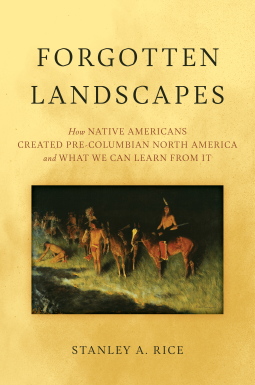Forgotten Landscapes
How Native Americans Created Pre-Columbian North America and What We Can Learn From It
by Stanley A. Rice
You must sign in to see if this title is available for request. Sign In or Register Now
Send NetGalley books directly to your Kindle or Kindle app
1
To read on a Kindle or Kindle app, please add kindle@netgalley.com as an approved email address to receive files in your Amazon account. Click here for step-by-step instructions.
2
Also find your Kindle email address within your Amazon account, and enter it here.
Pub Date Jul 15 2025 | Archive Date Jul 22 2025
The Globe Pequot Publishing Group, Inc. | Prometheus Books
Talking about this book? Use #ForgottenLandscapes #NetGalley. More hashtag tips!
Description
Rediscover the thriving civilizations of Pre-Columbian America and learn how Native ingenuity transformed the landscape into a flourishing world we can still learn from today
North America was not empty nor were its inhabitants savages when Europeans arrived in 1492. Quite the opposite, North America was thickly populated by indigenous people who lived in clean cities, had a thriving economy, and transformed the landscape into bountiful productivity. Forgotten Landscapes reveals the incredible extent to which Native Americans manipulated and shaped their surrounding environs through agricultural practices and urban engineering, resulting in one of the most prosperous civilizations of their time.
Well before European contact, North American cities and villages were bound together by an intricate trade network. Today, Spiro Mound in rural Oklahoma is a few piles of dirt, not on the road to anywhere. But at the time of the Mississippian civilization, about a thousand years ago, it was one of the largest cities in the world. With the controlled use of fire, Native Americans had transformed thick forests into open woodlands and expanded the ranges of prairies. Through organized hunting, Natives controlled the populations of prey animals such as passenger pigeons, and when Native populations grew large enough, they developed agriculture including irrigated crops, and even orchards.
In this fascinating and overdue book, author Stanley A. Rice shows readers the Pre-Columbian landscape of America that has been largely forgotten.
Advance Praise
“Forgotten Landscapes is a paradigm-jogging approach to North American history, in a lively narrative blending deep understanding of ecology with personal knowledge and fresh recognition of impacts of Native peoples on the landscape. Rice challenges us to learn from millennia of agricultural practices valuing diversity and coexistence in order to achieve a sustainable future." —Judy Parrish, Professor of Biological Sciences, Millikin University
"This marvelous book makes visible the hidden Native histories and their subtle legacies that exist across the Continent we count as home. These often-ignored legacies reflect the fact that the “new” world has long been home to Native peoples, who have shaped the landscapes we inhabit. Where people live, they farm, irrigate, burn, hunt, manage, and build monuments to their lives and communities. The United States’ myth of primeval wilderness has hidden these complex landscapes from most of us. Rice, a skilled writer for the public, an experienced educator, a respected scientist, and representative of a ten-generation Cherokee lineage, shows us through his words, his ancestors’ stories, and his photographs how wrong the American myth of primeval wilderness is, and how rich are the legacies of the landscapes this country has appropriated." —Steward T.A. Pickett, PhD, Distinguished Senior Scientist, Emeritus, Cary Institute of Ecosystem Studies
"This book fills an important niche illustrating the many ways Native Americans shaped our ecosystems. It is written in a style that will make it available to a diverse audience and provide a valuable and entertaining history of indigenous populations in North America." —Jon E. Keeley, Senior Scientist, U.S. Geological Survey, Western Ecological Research Center, Adjunct Full Professor, Department of Ecology and Evolutionary Biology, University of California, Los Angeles
Available Editions
| EDITION | Hardcover |
| ISBN | 9781493088669 |
| PRICE | $29.95 (USD) |
| PAGES | 248 |




